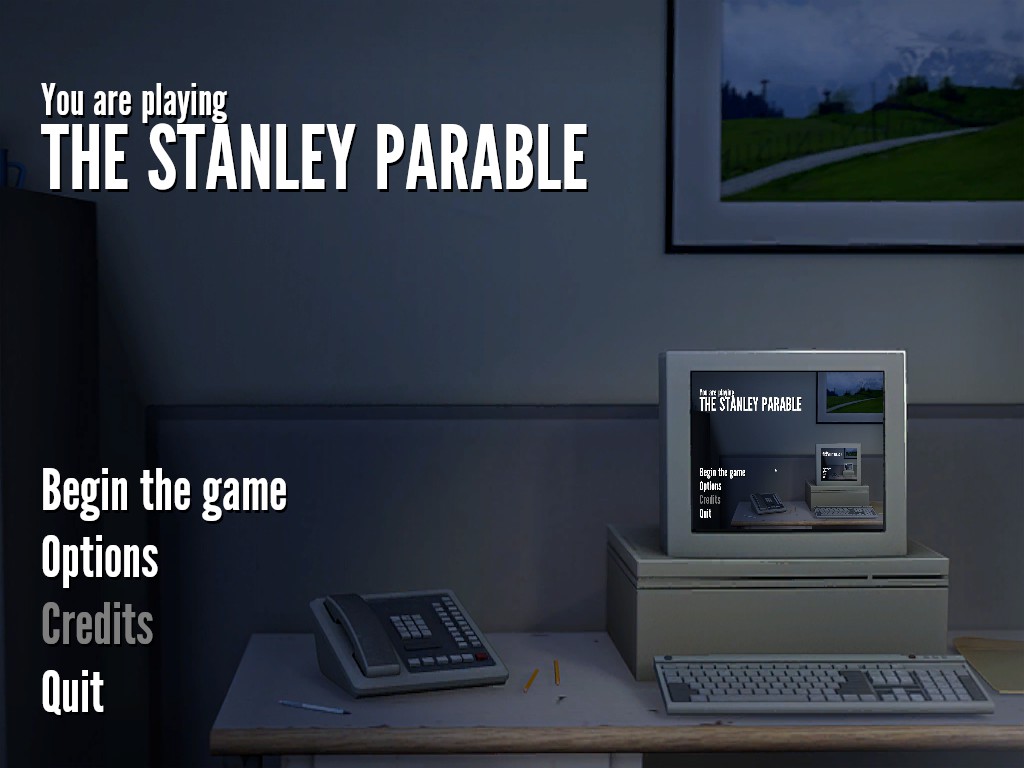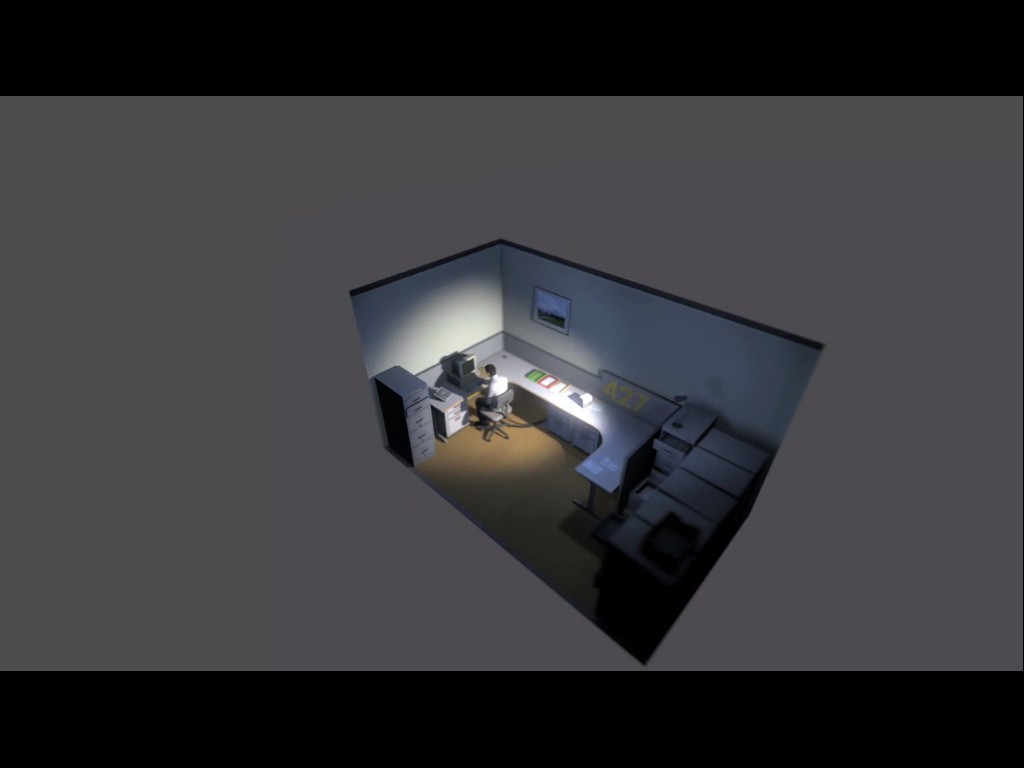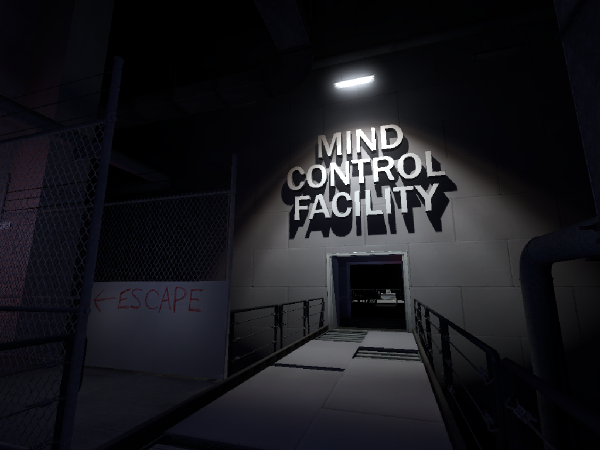Tom's Guide Verdict
Play this indie game and you may never think of office work, disembodied narrators, or video games the same way again.
Pros
- +
Highly original concept
- +
Excellent writing and voice acting
- +
Witty and thought-provoking
Cons
- -
Nontraditional gameplay could get boring
- -
Some audio and visual hiccups
- -
Is it even a game?
Why you can trust Tom's Guide
"Oh dear, what's the matter, Stanley?" the narrator asks, his voice dripping with false concern. "Is it that you have no idea where you're going, or what you're supposed to be doing right now?"
Not knowing what you're "supposed to be doing" is the default state in "The Stanley Parable," a new indie game for PCs recently voted onto the Steam gaming platform via its crowdsourced Greenlight program.
MORE: 10 Fun, Cheap Steam Games for a Rainy Day
This self-satirizing, fourth wall-bashing, first-person game puts players in the shoes of a dissatisfied office worker, then quickly yanks them out again, to explore the larger questions of what it means to experience a story.
Gameplay

"The Stanley Parable" only has four keyboard and mouse controls: directional keys to move, mouse to swivel, left mouse button to press a few buttons every once in a while, and the Esc key to exit the game.
The exit control usually isn't considered a gameplay mechanic, even though it's present in just about every computer game. In "The Stanley Parable," however, it just might be the most important part of the game.
As you play, you'll use environmental cues and the pronouncements of the narrator to make decisions about which doors to go through, which corridors to tread, which stories are worth following and when, inevitably, to put an end to it.
Story
A disembodied narrator tells us that Stanley works in a drab, windowless office where his job is, literally, to push buttons. The only way he knows which buttons to press is by following the orders that appear on his computer screen.
One day, those button-pushing orders simply don't show up. Stanley then realizes that his entire office is empty. He begins to wander through the halls, looking for any sign of his missing co-workers.

"When Stanley came to a set of two open doors, he took the door on his left," the narrator says.
But does he? Whether or not to obey the narrator's tacit orders is entirely in the player's control.
Obeying all the narrator's commands results in a "happy" ending where Stanley eventually escapes from the office. Disobeying the narrator's instructions, however, is far more fun, because that's when "The Stanley Parable" can gleefully jump into its absurdist, deconstructionist heart.
MORE: Not Child's Play: 6 Kid-Centric Games That Aren't For Kids
Disobeying the narrator doesn't just change what happens in the story — it changes the story itself. The narrator might become confused and forget his place. He might give up altogether and invite you to make up a new story with him. He might lead you into a recursive loop of never-ending hallways, or even start asking why you're still playing the game.
This may be frustrating, but hey, the game says, that's the point. And for all its sometimes lofty critique, "The Stanly Parable" never loses its sense of fun or wonder. Hallways you've tread time and again can still unlock new asides from the ever-entertaining narrator, and once you've started playing you never quite lose the feeling that the next playthrough might be the best one, if only you make the right decisions.
Art/Graphics
"The Stanley Parable" was originally released in 2011 as a mod (an altered version) of "Half Life 2," a 2004 video game by Steam owner Valve Corp.

That's a pretty strong pedigree; the "Half-Life 2" engine, called Source, forms the basis of many other games, from casual fan-made mods to popular titles such as "Dear Esther" and "Garry's Mod." These games all share realistic graphics that encourages attention to detail.
"The Stanley Parable" became well-known in the Source engine development community, eventually making its way onto Steam Greenlight, a crowdsourced competition to bring small-studio talent to the Steam game-distribution platform. The standalone game, also called the HD remake, was released Oct. 17 on Steam.
MORE: 10 Most Visually Stunning Video Games
These aren't the best Source Engine graphics you'll see. Some set pieces, such as the books in the boss' office, are flat and obviously fake. But in many other rooms, particularly the office meeting room, you'll want to stop and read the scribbles on the whiteboard.
These details make the game that much more engrossing, but it's also that much more disappointing when you look elsewhere for the same level of detail, and find only blurry computer monitors and empty notepads.
Music/Audio
The music in "The Stanley Parable" echoes the story the narrator wants to tell. But this game is all about subverting its own story. So when you hear music — either the mysterious chime when Stanley first explores his office, or the layered crescendo of discovery — you've probably been too obedient.
It's only when the music is totally silent that you feel the game is being honest with you.
The music also plays second fiddle to the narrator, a dramatic, warm-voiced and vaguely British man (voiced by Kevan Brighting) whose words guide the player just as much as the narrow corridors and one-way doors. A few occasional hiccups in the motion-activated voiceover can't shake the thrill of Brighting's excellent delivery.
Replayability
Playing through "The Stanley Parable" takes about 10 minutes, depending on the decisions you make. But even when you reach an "end" of sorts, you won't have a sense that you've finished the game. Beneath the simple architecture lies a complex labyrinth of decisions, causes, effects and strange twists that make each play-through radically different.
In fact, you'll most likely have to play through "The Stanley Parable" four, five, 10 or more times to even start to feel like you've begun to complete the game.

Steam's platform-wide achievement points usually provide players with reasons to replay a game, but with achievements such as "Achievement: This is an achievement" and "Go outside: Don't play 'The Stanley Parable' for five years," this game mocks players for willingly placing themselves within its recursive grip.
Conclusion
"This isn't a challenge," the narrator sneers during one of the game's many possible endings. "It's a tragedy. You wanted to control this world, that's fine, but I'm going to destroy it first."
To assign a review score to "The Stanley Parable" would just make its creators laugh. The game defies comparison with others of its medium; it has more in common with the absurdist plays of Tom Stoppard or the quirky critique of modern life in the Will Ferrell movie "Stranger Than Fiction."
In the gaming sphere, comparable titles range from the hugely popular, such as Valve's "Portal," to under-the-radar, such as the browser game "Every Day the Same Dream." In fact, "The Stanley Parable" all but dares players to ask if it can even be considered a game at all.
Regardless of the larger questions it raises and the discussions it prompts, "The Stanley Parable" still deserves to be considered on its own merits.
For taking a bold but measured leap, and for almost perfectly sticking its landing, Tom's Guide gives "The Stanley Parable" 4.5 out of 5.
Publisher: Steam
Developer: Galactic Cafe
Genre: Indie
Price: $14.99
ReleaseDate: Oct. 17, 2013
Platforms: Steam
Requirements:
OS: Windows XP/Vista/7/8
Processor: 3.0 GHz Intel P4 or Dual Core 2.0 or AMD64X2
Memory: 2GB of RAM
Graphics: 128 MB or higher, preferably with DirectX 9 compatibility
HardDrive: 3 GB of space
SoundCard: DirectX 9.0c compatible
Email jscharr@techmedianetwork.com or follow her @JillScharr and Google+. Follow us @TomsGuide, on Facebook and on Google+.
Jill Scharr is a creative writer and narrative designer in the videogame industry. She's currently Project Lead Writer at the games studio Harebrained Schemes, and has also worked at Bungie. Prior to that she worked as a Staff Writer for Tom's Guide, covering video games, online security, 3D printing and tech innovation among many subjects.

